Explainer
- Explainer
- Biology
Is it better to be a night owl or an early bird?
Some of us are early birds, others are night owls. But is that down to your genes or modern life?
By Angus Holland and Gemma Grant
On weekday mornings, Ingrid Freeman, a 23-year-old data scientist from Carlton North in Melbourne, is up at 5.45am. She bikes straight to the local pool with a friend or goes to the park for a run. “I like being outside in the early morning light. I usually wake up at that time naturally … and then after the exercise, I feel great,” says Ingrid, who is usually tucked up in bed by 10pm.
In Sydney’s Parramatta, 26-year-old IT support worker Robert Khadka struggles to wake when his alarm goes off at 6.30am. Work is fine but the real excitement comes after hours. In the evenings, he logs online to play video games with friends. “After a long day at work, it’s something that you enjoy.” A couple of years ago they could finish playing at 3am. But he’s trying to rein in his habits and be in bed by midnight.
Freeman is a classic “early bird” while Khadka is more of a “night owl”. Far from being cute cliches, there’s a scientific basis for these terms. A relatively modern field of research, chronobiology, which studies the internal rhythms that regulate the workings of every living thing, suggests we’re born with clocks that tick to their own beat.
But how hardwired are these clocks? Can someone change from night owl to early bird? Who suffers more when daylight saving comes around?

Ingrid Freeman: “I like being outside in the early morning light.”Credit: Luis Enrique Ascui, digitally tinted
When did we first decide the right time to go to bed?
For most of human history, most of us had little choice about when we hastened to bed: we tended to hit the sack some time after dark then rose when the cock crowed at dawn to work the fields and feed the animals, or we’d starve. Then came artificial light: first, the ancients’ stinky oil lamps and tallow candles then luxurious piped-in gas lighting (from 1792) and Thomas Edison’s game-changing electric bulb (from 1880), for those who could afford it. What to do after sunset and, therefore, when to go to bed, became a lot more fluid.
In the Roman era, elite types were expected to rise early, writes classical studies researcher Laura Nissin in her PhD thesis Roman Sleep. “Sleeping late was scorned and late sleepers were openly derided.” Yet, equally, staying up late to read or study was “quite virtuous”. “There were certain noblemen,” she writes, “who admitted that they found early morning rising displeasing; if he did not want to be disturbed and woken up, he was not.”
The Swiss physician and alchemist Paracelsus (born 1493) suggested we should bed down two or three hours after dinner time, “when the meat is now settled at the bottom of the stomach.” Ayurveda, the ancient holistic system of medicine that emerged from the Indian subcontinent, reasonably advised followers to be up and about before sunrise and asleep before 10pm. The day is divided into four-hour segments, each influenced in turn by one of three forces, or “doshas”: Vata, Pitta and Kapha. Kapha, the energy of water and earth, runs from 6am to 10am; best to wake up before then or you’ll feel sluggish and heavy.
In the 17th century, it’s recently been revealed, it was not uncommon for Western Europeans to have two sleeps: going to bed at nightfall then rising to check on farm animals, chat with your spouse or perform household chores for an hour or two, before heading back to bed. (Thus, burning the midnight oil, a term first used in 1635.) In his exploration of medieval records in London’s Public Record Office, US historian Roger Ekirch found hundreds of references to double sleeps, a habit he termed “biphasic” sleep. “The initial interval of slumber was usually referred to as ‘first sleep’,” he writes in his history of nighttime, At Day’s Close. “The succeeding interval was called ‘second’ or ‘morning’ sleep. Both phases lasted roughly the same length of time.”
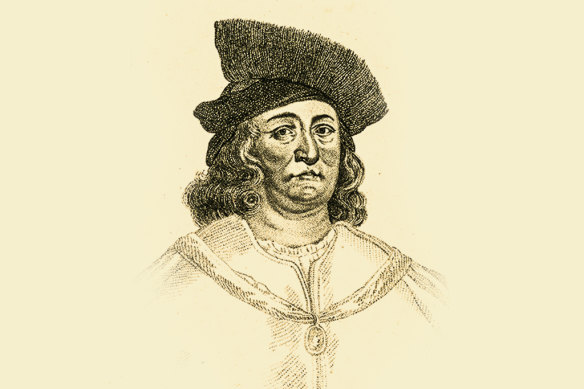
Paracelus: go to bed “when the meat is settled at the bottom of the stomach.”Credit: Getty Images, digitally tinted
In France, this first period of sleep was the “premier somme”; in Italy, “primo sonno”. Ekirch’s discoveries later inspired novelist Robert Harris to write his bestseller Second Sleep, a kind of thriller set in a future where double sleeping is once again routine in village life. In one episode, the protagonist, a priest, is awakened by noises in the street. “What hour is this, Mrs Budd?” he demands of the housekeeper. “Why does everyone wander about in this strange manner?” Mrs Budd holds up a candle to the clock. “Two o’clock, sir, same as normal.”
A form of double sleeping, of course, still exists, at least to some extent, in Spain, where you might nap for an hour or two after lunch, head back to work and not start thinking about dinner until at least 9pm. The “siesta”, derived from the Latin “sexta”, refers to the sixth hour of daylight. Sound idyllic? In reality, the siesta was a mechanism that allowed labourers to get up at dawn, toil mercilessly, briefly escape the midday sun, then return to work: a necessary evil, not a luxury. Today, Spaniards work slightly longer hours and get less sleep than the average European and fewer than 18 per cent of Spaniards have siestas, according to a 2016 poll.
In Victorian England, poor sleep habits were frowned upon, unsurprisingly, including by doctor Benjamin Ward Richardson who describes “Disease from Late Hours and Broken Sleep” in stern detail, including at “unearthly balls and evening parties where the young of both sexes are called together to dance into utter prostration of mind and body, until the daylight dawns”.
By the 20th century, though, we found quirky sleep habits fascinating. Former British prime minister Winston Churchill, a self-described “tardy riser”, loved a midday nap, and often lounged in bed all morning, reading newspapers and dictating letters. In the ’90s, Cuban dictator Fidel Castro entertained John F. Kennedy jnr, eldest son of the assassinated US president, until 2am, an hour before his usual bedtime; Adolf Hitler, according to intelligence accounts, woke around 10am, received visitors in the afternoon and could work until bedtime at 4am.
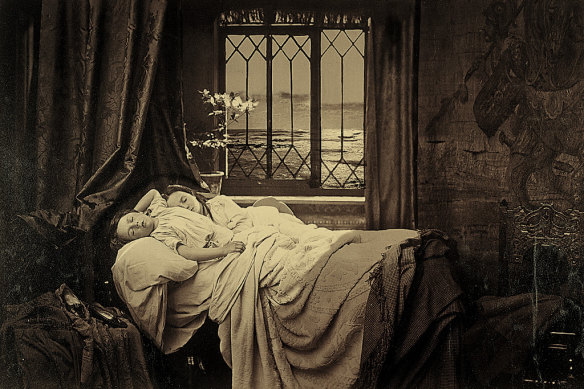
“Disease from Late Hours and Broken Sleep” were considered health hazards in Victorian England.Credit: Getty Images, digitally tinted
Margaret Thatcher famously survived on four hours of sleep. World chess champion Bobby Fischer slept most of the day and liked to phone friends at 4am. In 2007, John Travolta talked about a regular night, taking his son Jett, then 15, out to a deli at 3am. “He had matzo ball soup and I went to bed at about 5am.” Meanwhile, the late “gonzo” journalist Hunter S. Thompson, according to biographer E. Jean Carroll, liked to rise at 3pm for his first tumbler of Chivas Regal whisky with the “morning” papers and several Dunhill cigarettes followed by cocaine at 3.45pm, more whisky, then the day’s first cup of coffee at 4.05pm.
Today, though, it’s not those who stay up late but the (irritatingly, for night owls) cheery early birds who have captured the narrative. Montreal digital sales executive Christian Knudsen briefly held the title of early bird-in-chief for his (apparently sincere) LinkedIn post of 2019 that described a typical work day from 4.30am. “I wake up. Instantly. From the fogginess of dreams, to the readiness of full consciousness. As I have done for over fifteen years. A quick kiss to my wife’s sleep head, I proceed into my morning routine …”
Yet few can hold a candle to the king of early risers: the actor Mark Wahlberg, who told a talk show in 2018 that he usually woke at 2.30am and had said his prayers, eaten breakfast, worked out and eaten another meal before showering at 6am. (These days, with parental responsibilities, he’s apparently pushed the wake-up call back slightly, to 4am.)
Yet the underlying notion that we should all do the same – a new twist on the old trope that the early bird gets the worm, believed to have first appeared in print in a book of proverbs in 1605 – is to deny biology. For some of us, our body is simply not geared up for an early start; instead, we’re slow-moving and slow-thinking in the morning and don’t hit our stride until the afternoon, Churchill-like, if not later. Indeed, we now know that our body clocks are all calibrated slightly differently.
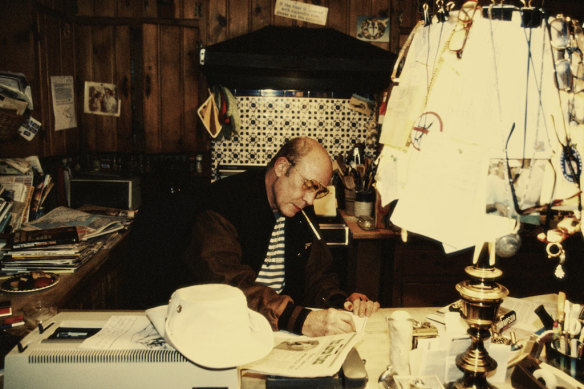
Hunter S. Thompson, a famous night owl, usually rose at 3pm.Credit: Getty Images, digitally tinted
What are chronotypes and are they genetic?
Scientists have long speculated about the presence of a body clock, an internal mechanism that somehow tells the different parts of our bodies what to do. “Essentially, it’s very well known and understood that anything with a brain, pretty much all of life on Earth is very strongly regulated by the day-night cycle,” says Peter Catcheside, a sleep and respiratory physiologist at Flinders University in Adelaide. “Humans don’t really take much notice of how important that system is for regulating how well we can sleep and how well we can function during the day.”
In the 1700s, the French “natural philosopher” Jean-Jacques d’Ortous de Mairan showed how the leaves of a particular plant continued to open and close on a 24-hour cycle even in darkness, governed by its own internal clock. In the early 20th century, biologists described similar phenomena in bees and fruit flies and, by 1959, Romanian scientist Franz Halberg was studying what we now call “chronobiology”. He is credited with coining the term “circadian”, or “circadian rhythms”, to describe the approximate 24-hour cycle of activity within a plant or animal; approximate, because these internal clocks are typically very slightly out of whack with earth cycles; circadian, from the Latin circa diem, means “about a day”.
By the 1970s, researchers were on to the idea of how people’s clocks might affect their productivity. In 1976, researchers James A. Horne and Olov Ostberg devised a questionnaire to find out when people were at peak alertness, including, “What time would you get up if you were entirely free to plan your day?”
They correlated the answers with the time of respondents’ peak body temperature, which they attributed to the time of peak activity, finding that “morning” types had a significantly earlier peak than “evening” types and tended to have a higher daytime running temperature. These morning and evening types were later redefined by some as “larks” (to bed before 11pm and up before 8am) and “owls” (to bed at or after 11 pm and up at or after 8am). Further studies found links between the body clock and the time we begin to produce melatonin, first discovered in 1958, which flows through our bodies in the evening to begin the transition to sleepiness.
‘Working later, keeping lights on later, eating later and sleeping in can all delay the sleep opportunity if done over time, creating night owl-like tendencies.’
Owls’ clocks run slightly slow, naturally extending the time they want to go to bed; larks are the opposite, nudging them ever earlier. Both, however, are largely kept in check by exposure to daylight and social routines. Most of us fall somewhere between the two. Rare extreme deviations in the body clock from the normal day-night cycle are defined as “sleep phase disorders”, either too advanced or too delayed.
Our central clock is governed by what are called suprachiasmatic nuclei in the middle of our brains, which message the body to produce the hormones that control everyday functions, from appetite and sleep to alertness and temperature. This clock responds to light, activity, hunger and fatigue. “Chronotypes” are each individual’s particular clock preferences, which remain relatively stable through our lives (although it is true that adolescents and young adults naturally prefer evenings while little children and older adults tend to get up early).
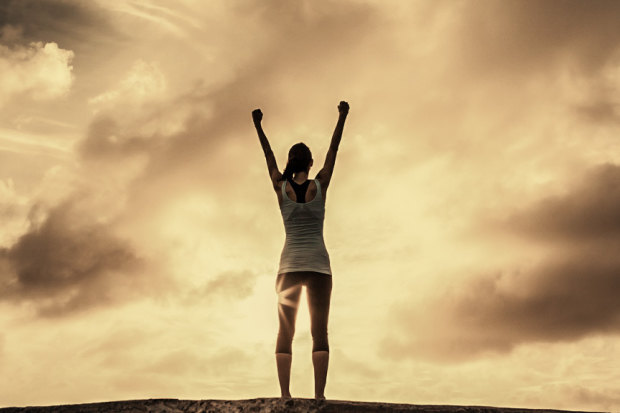
The proverb about the early bird and the worm was first seen in print in the 1600s. Credit: Getty Images, digitally tinted
“As we move through adulthood into older age, the tendency to wake earlier and go to bed earlier becomes more pronounced,” says Stephanie Romiszewski, a specialist sleep physiologist and founder of the Sleepyhead Clinic in Britain. “However, this doesn’t mean everyone becomes a morning person, it’s more nuanced than that. Working later, keeping lights on later, eating later and sleeping in can all delay the sleep opportunity if done over time, creating night owl-like tendencies.”
We also know that our individual chronotypes are strongly influenced by our genes – that we are born larks, owls or something in between. “It’s genetically determined, whether our preference is to go to bed early or to stay late,” says Dr Moira Junge, CEO of the Sleep Health Foundation, based in Australia.
In 1984, a group of scientists isolated the particular gene that acts as a master timekeeper: it accumulates and degrades a particular protein over a 24-hour cycle in synchrony with the circadian rhythm. For their discovery and subsequent research, Jeffrey Hall and Michael Rosbash at Brandeis University in Boston, and Michael Young at the Rockefeller University in New York, were awarded a Nobel Prize in 2017. Another major breakthrough came in the 1990s, when Russell Foster, today a professor of circadian neuroscience at Oxford University in England, showed that the human eye contained light-detecting cells that were not required for vision; instead, they helped the body to know whether it was day or night and to synchronise the body clock.
Why do clocks vary from person to person? Some theorise that, in prehistoric times, it made evolutionary sense to have different members of the clan awake at different times (to keep watch for sabre-toothed tigers), known as the “sentinel hypothesis”. In 2023, meanwhile, San Francisco computational biologist Tony Capra and colleagues showed that people with Neanderthal genes are more likely to be early birds. Why? Because, it’s theorised, Neanderthals lived in northern climes and evolved to make the most of daylight during the shortest days in winter.
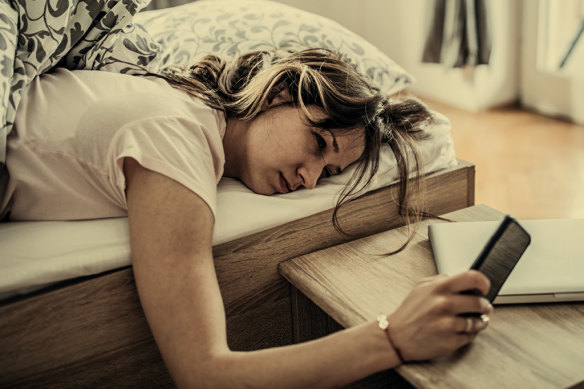
Social jet lag: when your body clock and the actual clock are out of whack.Credit: Getty Images, digitally tinted
What’s social jetlag?
Left to our own devices, early birds, whose clocks run fast, will get up earlier over time, and night owls, whose clocks run slow, will gradually get up later and later, up to half an hour a day. Of course, we are rarely left to sleep and wake when we want – hence, many of us likely suffer what’s called “social jetlag”.
We know about real “jetlag”, the term coined at the dawn of the jet age in the mid-1960s to describe what happens when the body’s circadian rhythm is out of synch with the time zone you’re currently in. Despite some people’s claims that they somehow never get it, jet lag is unavoidable, causing fatigue, insomnia, digestive issues and other maladies, and generally takes about an hour a day for each time zone you’ve crossed to resolve. Night owls might find it easier than early birds to travel west because they just keep pushing their bedtime later; larks have a slightly easier time flying east, which forces you to get up earlier.
‘On weekends, I’m often a bit sleep-deprived because I’m staying out late and then still waking up early ...’
Social jet lag – a misalignment of your body clock with the outside world – is more subtle. Shifting your sleep cycles between “free” days (such as the weekend, when you can go to bed and get up when you please) and work or social days, when your movements are dictated by other priorities, can eventually lead to chronic sleep deficit and resulting health issues. As our early bird Ingrid Freeman tells us, “On weekends, I’m often a bit sleep-deprived because I’m staying out late and then still waking up early, or I’m just getting tired earlier and then I’m going home a bit early.”
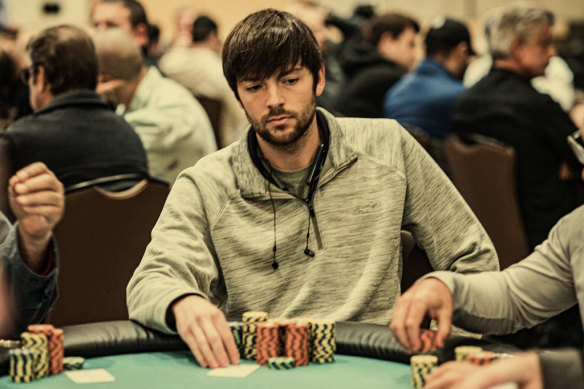
Night owl Sean Legendre at a poker competition in Tampa, Florida in 2021.Credit: Courtesy Sean Legendre
At the other end of the spectrum is Sean Legendre, who lives in New York City, who has founded a company that helps people like him: “extreme night owls”. The 30-year-old likes to wake at 2pm, has lunch at 8pm and then dinner around midnight. “I tried, obviously, to have a regular schedule,” he says. “I tried for years to do that and, every single time, I’d always default back.” Instead, he has made his livelihood fit his cycles – first as a late-night poker player then by founding the night shift platform NightOwling. He speaks with us at half past midnight, the time when he says he feels most alert and productive. “This wasn’t a phase or a choice,” he says. “It is simply who I am.”
‘The clock can be adjusted quite radically. What [the body] doesn’t like is changing shifts, changing sleep schedules.’
Shift workers and people forced to wake early or work late, say, in hospitality, are similarly at risk of sleep problems. “Someone who’s on permanent night shift, they’ve settled down, they’ve adjusted their clock, can potentially, in theory, live quite fine, as long as they get enough sleep,” says Peter Catcheside. “It can be done. The clock can be adjusted quite radically. What [the body] doesn’t like is changing shifts, changing sleep schedules.”
Most of us can keep our clocks in reasonable tune through constant exposure to early-morning light, which helps to “lock-on” the circadian clock to the light-dark cycle, Russell Foster tells us from Britain. Julia Stone, a senior research fellow at the University of Melbourne, agrees that having a strong, bright light source during the day and dim light in the evenings “is really important for setting that circadian rhythm and keeping it in good alignment”.
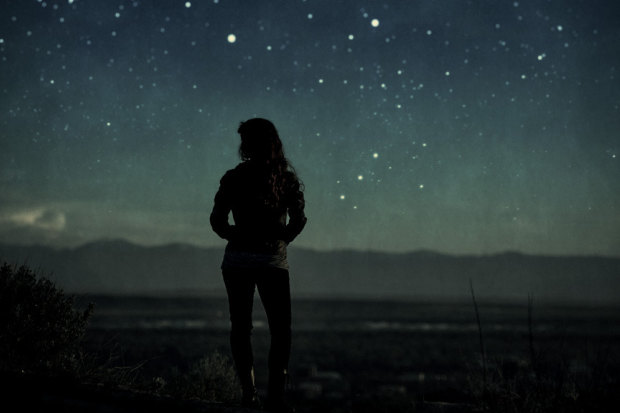
Night owls might have a reputation for creative pursuits but plenty of artists are early risers too.Credit: Getty Images, digitally tinted
Are you better off being an early bird or a night owl?
Sadly for night owls, life might be better for larks – at least, it is according to them. “There is something truly magical about 5am,” bestselling self-help author Robin Sharma told the Financial Times in 2019. “That’s why many of the great saints, mystics, writers and artists rose before sunrise. The mind and heart are more open and pure then. And we can access more of our true power and potential.”
Still, some studies have suggested that owls do retain advantages over larks. They’re able to be more productive for longer each day, they earn more and, according to a 1998 study of nearly 2000 people in Britain, are more likely to own a car. (Maybe because there’s no public transport late at night where they live?)
Night owls, in popular culture at least, are more likely to be creative geniuses, composing sonatas or slapping paint onto canvas into the early hours. It’s possible, of course, that artistic pursuits simply give owls the freedom to live according to their natural body clock or, in the case of the Hunter S. Thomsons of the world, to scratch a living around a reprobate lifestyle.
The research is patchy, however. “Eveningness preference (late chronotype) was previously associated with different personality dimensions and thinking styles that were linked to creativity, suggesting that evening-type individuals tend to be more creative than the morning-types,” said a 2016 study from Budapest. “Nevertheless, empirical data on the association between chronotype and creative performance is scarce and inconclusive.”
For every nocturnal would-be genius there’s a Haruki Murakami, whose routine for his novel Norwegian Wood meant rising at 4am, writing for six hours, then heading out for a 10-kilometre run. Kurt Vonnegut (Cat’s Cradle) woke at 5.30am, wrote until 8am, had breakfast, wrote until 10am, did a bit of teaching preparation in the afternoon and basically spent the rest of the day pottering about. The late Hilary Mantel told The Guardian in 2016: “I used to be a late starter, but now I get up in the dark like a medieval monk, commit unmediated scribble to a notebook, and go back to bed about six, hoping to sleep for another two hours and to wake slowly and in silence.” For Ingrid Freeman in Melbourne, the hours between 8am and 11am are her favourite. “I’ve had my exercise, I’ve had my coffee. I’m really productive, and I feel good.”
‘The trouble with being a night owl is that your sleep gets clipped in the morning hours, where most of the precious REM or dream sleep occurs.’
University of Queensland researcher Frederic Gachon says we’re still just beginning to understand much of this field: exactly which physiological processes are controlled by the circadian clock in individual cells and organs, how the disruption of these rhythmic processes might be associated with diseases and, critically, how we might manipulate the body clock to treat or prevent these pathologies. What we do know is this: “When we are working or sleeping or eating at the wrong time, our body cannot work optimally and this is associated with numerous diseases,” he says. Studies do indicate poor sleep as a factor in increased risk for cancer, neurodegenerative diseases, metabolic disorders and inflammation. Our bodies also respond poorly to abrupt changes in routine: consistency of bedtime and waking is best.
Night owls draw the short straw at the start of daylight saving, says Moira Junge. As the chronological clocks jump forward, those who would usually sleep in are losing an hour of precious rest. REM sleep in particular can be an issue for night owls. We cycle in and out of REM sleep throughout the night, with the longest and most beneficial periods occurring closest to when we wake up in the morning. “The trouble with being a night owl is that your sleep gets clipped in the morning hours, where most of the precious REM or dream sleep occurs,” Dr Alex Dimitriu, founder of the Menlo Park Psychiatry and Sleep Medicine clinic, told The New York Times. “Instead of sleeping seven or eight hours per night, most night owls get forced to sleep five or six – with a hard start time in the morning.”
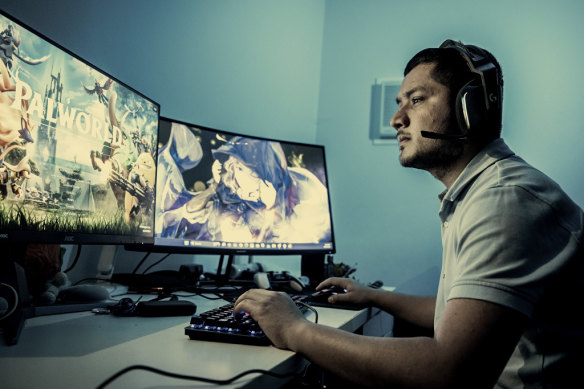
Robert Khadka: “I want to change my routine. Be an earlier person.”Credit: Louis Douvis, digitally tinted
In short, many of the numerous studies into chronobiology indicate that naturally early risers are less likely to suffer from missed sleep and the various bad things that might lead to, such as heart disease, Alzheimer’s and mental health and metabolic problems. “There’s some amazing work that’s been done relatively recently looking at mental health and sleep and light exposure, and there’s pretty good evidence that all of those things are interrelated,” says Catcheside.
The research does show some concerning trends for night owls, Romiszewski agrees. “But here’s the thing: a lot of these findings don’t take into account socio-environmental factors. Night owls often live in a world built for early birds, which could skew the data. When you control for things like shift work, access to healthcare, or social jetlag, the differences shrink. That said, there still seems to be some inherent risk associated with a night owl chronotype, but it’s likely not as dramatic as the headlines suggest.”
(Night owls are prone to exercise less and eat more junk food, found a 2018 study led by Kristen Knutson, an associate professor at Northwestern University in Illinois. They might be tempted to drink more too. Says Sean Legendre: “There’s nothing else available, right? If you’re wanting to be social, well, guess what? The only places that are open in most places are places that serve alcohol. I actually became somewhat of a heavy drinker because there weren’t other opportunities to socialise with other people.“)
Robert Khadka, our Sydney night owl, is beginning to realise the importance of a good night’s sleep. With an 8am office start, staying up too late is taking its toll. “I am finding it a little bit difficult,” Robert says. “But I want to change my routine. Be an earlier person.”
Yoni Meinrath, a 46-year-old management consultant from Sydney, tells us he has managed to reset his cycle by forcing himself to get up early. “I did it about 10 times. It became habit. It’s not easy at first, but if you’ve got a purpose in doing so then it gives you a reason to get up if you do it enough times.” He is now the epitome of the early lark, waking between 4.30am and 5.15am and filling his pre-work hours with meditation and coastal walks, ocean swimming and ice baths. “I would say it’s great for your mental health, mental wellbeing, your physical health, your productivity,” he tells us one evening, keeping one eye on the clock for his upcoming 8.30pm lights out.
Get fascinating insights and explanations on the world’s most perplexing topics. Sign up for our weekly Explainer newsletter.
Let us explain
If you'd like some expert background on an issue or a news event, drop us a line at explainers@smh.com.au or explainers@theage.com.au. Read more explainers here.